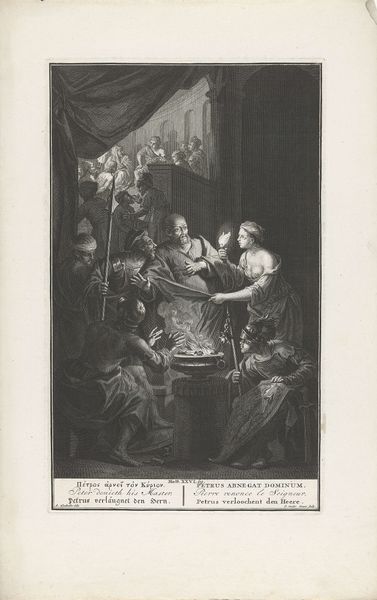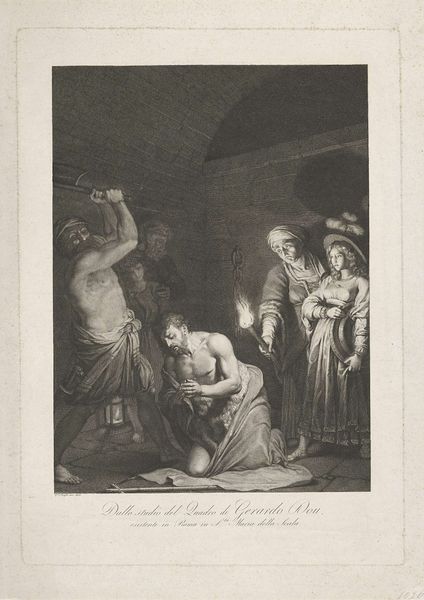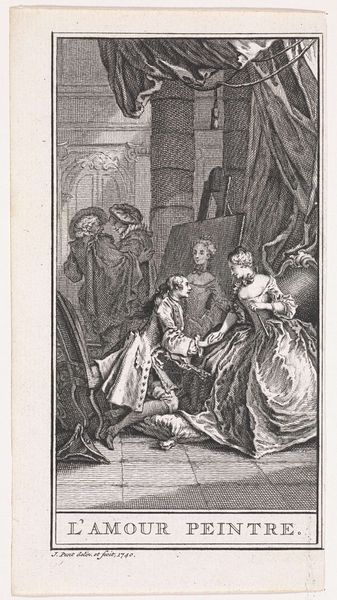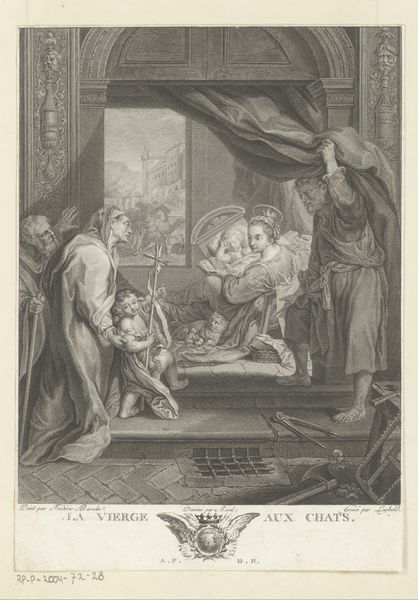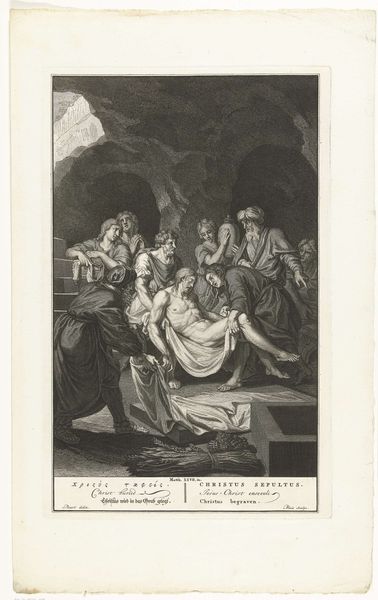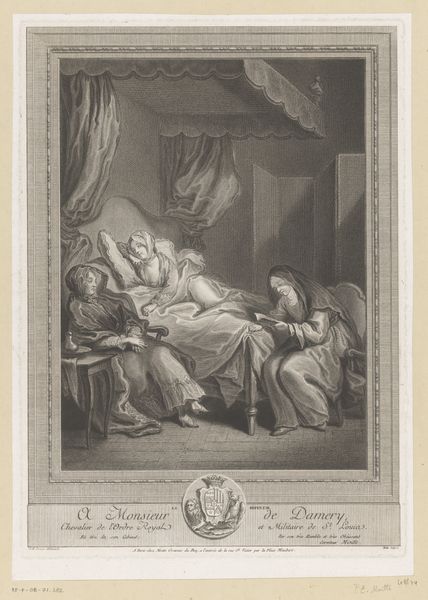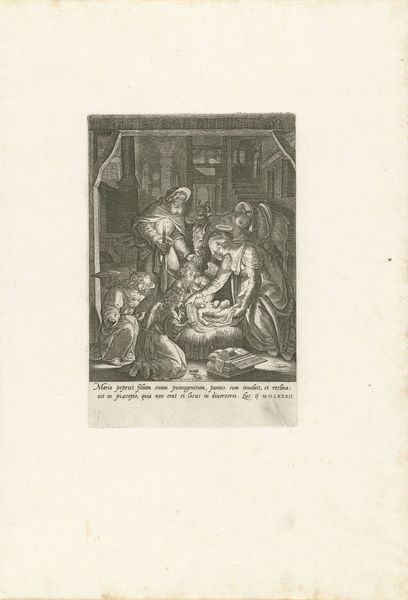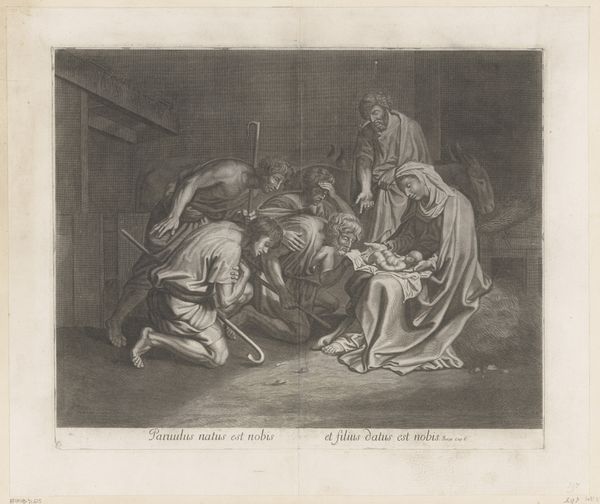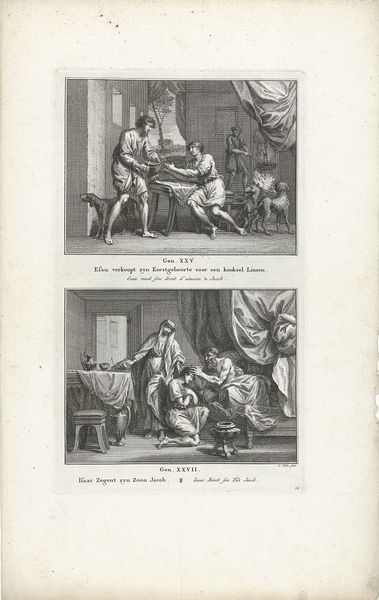
print, intaglio, engraving
#
narrative-art
#
baroque
# print
#
intaglio
#
figuration
#
history-painting
#
engraving
Dimensions: height 351 mm, width 229 mm
Copyright: Rijks Museum: Open Domain
Curator: This print, held here at the Rijksmuseum, is titled "Bekering van de gevangenbewaarder," which translates to "Conversion of the Gaoler," made by Matthijs Pool, possibly between 1705 and 1728. The intaglio work depicts a baptism scene. Editor: It's quite dramatic, isn't it? The intense contrast of light and shadow gives it an almost theatrical feel. All the figures are huddled together, tightly packed into the composition. The shiny metal vessel in the center really stands out. Curator: The print is clearly influenced by the Baroque style and is rooted in narrative art and history painting. Think of the Counter-Reformation, and how powerful institutions harnessed such imagery to move people and reinforce dogma. The politics embedded in this religious scene are pretty charged. Editor: I’m drawn to the execution itself. Looking closely, you can see the labor invested in those meticulously engraved lines creating tonal variations. What kind of acid did he use, I wonder? What would Pool’s studio look like? What sort of paper was available at this time? Curator: These images had a significant role in shaping social and cultural attitudes, particularly towards religious conversion and the relationship between authority and faith. Its function extends far beyond mere aesthetics, offering a glimpse into the past. Editor: Seeing the kneeling figure, being doused with water, brings the bodily reality of conversion into stark focus, and brings me back to considering the process of creating the artwork. Think about the artist’s labor, the etcher’s skill, and the wider economy that sustains art production and circulation! The finished print is just the last step of the story. Curator: Absolutely, and to further contextualize this imagery, it’s vital to consider the print's function, distribution and historical perception as crucial in understanding the work's complete influence on cultural memory and subsequent representation. Editor: Thinking about the tools and material reality offers a whole new appreciation for the artist's skill and the historical context from which the work emerged. Thanks for shedding some light on its historical relevance!
Comments
No comments
Be the first to comment and join the conversation on the ultimate creative platform.
